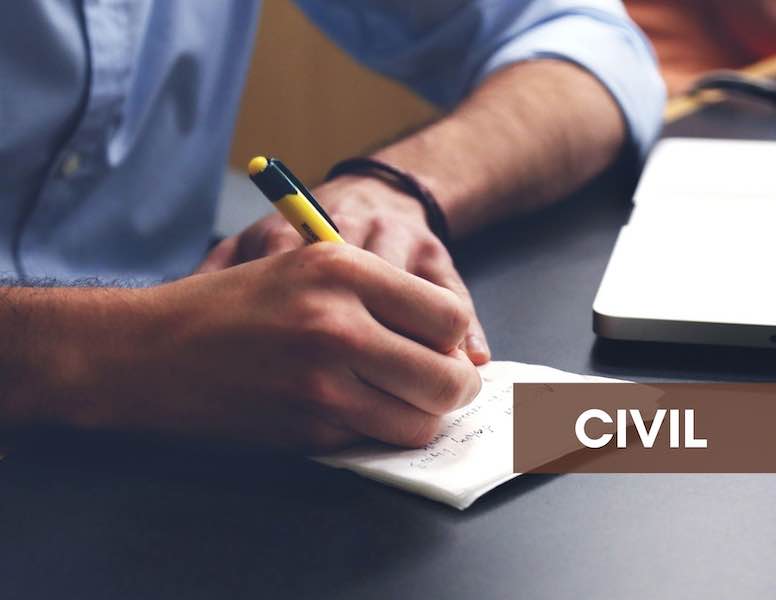Bounced Cheques: What are the Legal Ramifications and Legal Recourse Available?
by Preveena Ravindra Kumar ~ 31 March 2021

Contributed by:

Preveena Ravindra Kumar
Email: vna@thomasphilip.com.my
In recent years, there has been a drastic shift towards the use of online banking and/or e-payments in our day-to-day transactions. Rare is the sight of an individual pulling out a cheque book, a black gel pen and putting down a signature to make payment.
Nevertheless, there are still many individuals and/or corporations who rely heavily on payment by way of cheques. This especially so if they are dealing in instances where they will need to issue post-dated cheques for their commercial transactions and/or as a means to monitor their cash flow.
If you are an individual who commonly uses cheques as a mode of payment or as a mode of receiving payment, there may come a time where you may be potentially faced with a dishonoured cheque situation. In those instances, what are the legal implications if you are the issuer of the cheque and/or what are the legal remedies available if you are the recipient of said bounced cheque?
This article will discuss both the legal consequences and/or legal remedies available in a bounced cheque situation as well as seeks to provide some tips on how to avoid such situation.
What is a Cheque?
A cheque is defined in Section 73 (1) of Bills of Exchange Act 1949 (Act 204) as :
- “A bill of exchange drawn on a banker payable on demand.”
A bill of exchange is further defined in Section 3 (1) of Bills of Exchange Act 1949 (Act 204) as:
- “A bill of exchange is an unconditional order in writing, addressed by one person to another, signed by the person giving it, requiring the person to whom it is addressed to pay on demand or at a fixed or determinable future time a sum certain in money to, or to the order of, a specified person, or to bearer.”
To put it simply, a cheque is a document that orders a bank to pay a specific amount of money from a person’s account to the person in whose name the cheque has been issued.
What is a ‘Bounced Cheque’?
In the early 1920s in America, bad cheques were commonly known as rubber cheques because of their “characteristics” which “bounced” back when it hit the bank.
In today’s context, however, bad cheques are commonly known as dishonoured or bounced cheques. Both terms have been used interchangeably but nevertheless, carry the same meaning. What then results in a bounced cheque situation?
A cheque may be dishonoured for several reasons, and mainly due to:
- An account with insufficient funds;
- Mutilated cheques whereby vital parts of the cheque have been damaged;
- Signature mismatch whereby the signature that appears on the cheque is different from the signature of the issuer; and
- Undated cheques whereby there is no clear date written on the cheque
Consequences of a Bad Cheque?
Being a bad cheque offender in Malaysia has its consequences. The severity of the consequence depends on the number of times the individual has committed a bad cheque offence.
Each time a bad cheque is issued, it is treated as a bad cheque incident. The drawee (ie, the bank) will issue the drawer (ie, the person who authored the cheque) a warning letter for each bad cheque incident. A bad cheque offence occurs when the drawer has committed three (3) bad cheque incidents within 12 months from the date of the first incident.
Upon committing such offence, the consequences that may potentially arise include that of the drawer’s name being blacklisted and as a consequence, any applications for loans, credit cards and other banking facilities may be affected.
In a worst-case scenario, the drawer may be prevented from opening any new current accounts, including joint-accounts with any banks in Malaysia during the prohibition period (i.e., the period preventing one to operate or open a bank for a specified period depending on the level of the offence).
How do you remedy your blacklisted status?
One of the avenues to remedy a status of being blacklisted is for the drawer to arrange for their blacklisted account to be redesignated as a “special account” or open a “special account” to cash incoming cheques.
However, it is important to highlight that the redesignation or opening of such “special account” is at the discretion of the bank and subject to a couple of conditions, mainly:
Whether the drawer is a first and/or second time offender?; or
Whether the applicant is Company, Partnership, Sole Proprietor and/or Individuals with overdraft facilities.
Having said that, realistically, the only way to clear a blacklisted record is to avoid committing further bad cheque offences during a short period of time.
Bounced Cheque: Is it a Cause of Action?
Section 47 of Bills of Exchange Act 1949 provides a simple locus standi for one to sue the drawer without having to prove further.
47. (1) A bill is dishonoured by non-payment—
(a) when it is duly presented for payment and payment is refused or cannot be obtained; or
(b) when presentment is excused and the bill is overdue and unpaid.
(2) Subject to this Act, when a bill is dishonoured by non-payment, an immediate right of recourse against the drawer and indorses accrues to the holder.
This position is fortified in the case of Yee Teck Fah v. Lee Chee Meng [2020] 1 LNS 84 whereby the Court held that once a cheque is dishonoured, the holder of the cheque will have a cause of action against the drawer of the cheque. In this particular case, the cheque in question was dishonoured due to “Payment Stopped”.
Further, there was an understanding that cheques must be treated as cash as it is a promise to pay. Once it is issued, the holder holds it for value and is entitled to treat it as good value to discharge any debt or sums owing between parties. In this regard, it is clear that a bounced cheque situation opens up an avenue for the payee to commence a legal action against the drawer.
Steps to Avoid a Bad Cheque Situation
In order to avoid a bad cheque situation, the drawer of the cheque merely needs to be vigilant in ensuring:
- That there are sufficient funds in one’s account before issuing any cheques;
- That the details of the cheque (ie, figures, date and signature) are accurate before issuing it;
- That the cheque is in good condition and not damaged;
That if one wishes to issue a cheque using funds from a cheque deposited earlier, that the drawer ensures that the deposited cheque had been cleared for payment by the bank.
Conclusion
A dishonoured cheque and/or bounced cheque situation is more common than not. Whilst it might seem like an ancient method of payment given the rise of e-payment in this day and age, cheque as a mode of payment still remains dubbed as a reliable mode of payment.
Having said that, the author of the cheque then bears the burden of ensuring that the cheque goes through without a hitch. Failure in which could potentially give rise to a legal suit, premised on the cause of action of a bounced cheque.